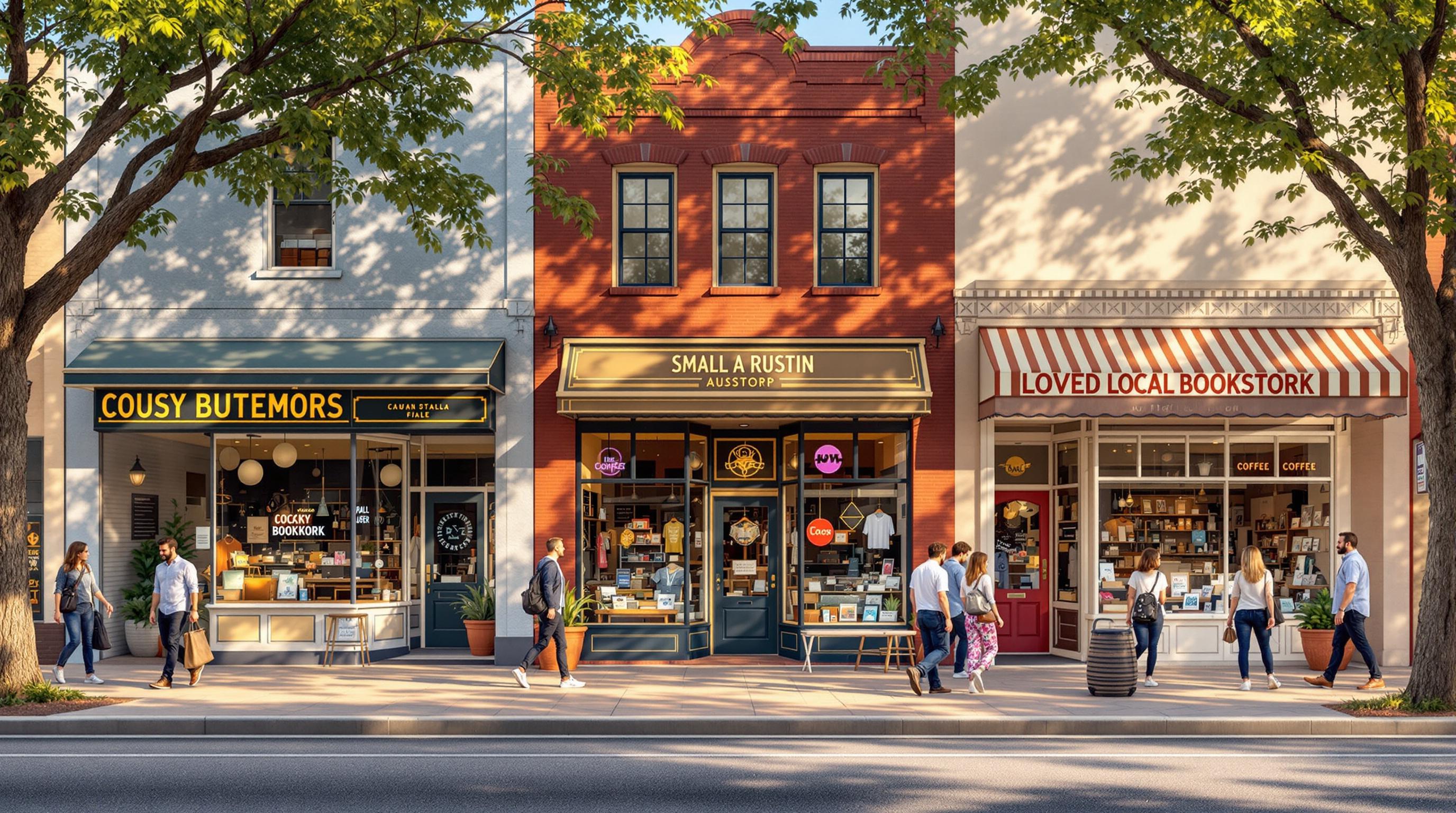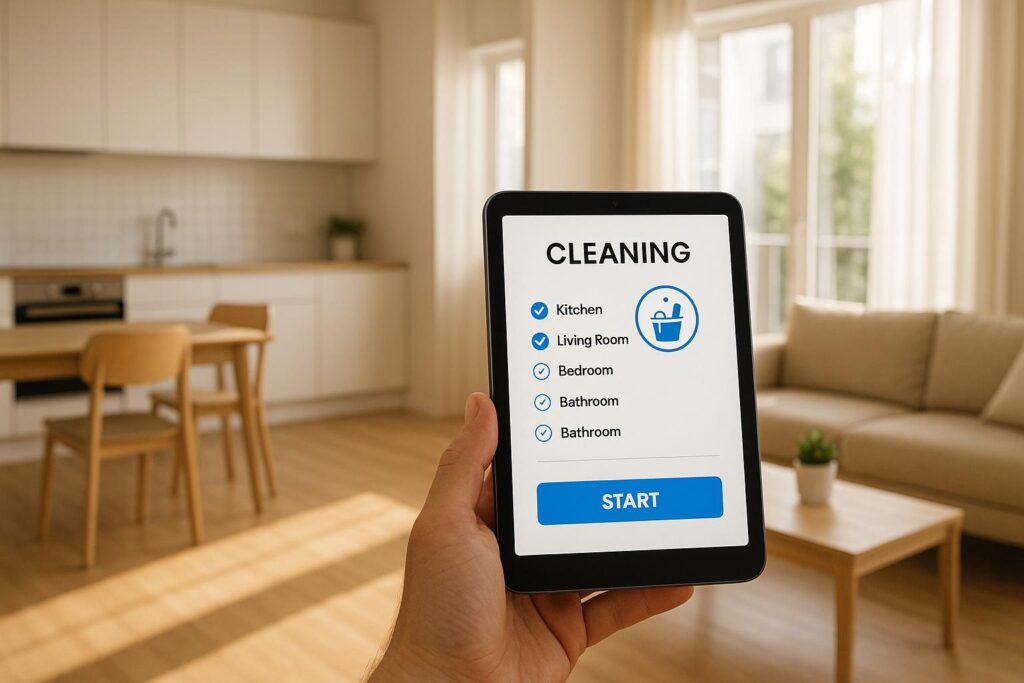In Austin’s rapidly growing retail market, small businesses face rising lease costs and redevelopment pressures. To stay resilient, business owners should:
- Monitor Risks: Watch for signs like changes in property management or lease terms.
- Secure Locations: Consider long-term leases, property ownership, or smart relocation to areas where customers are concentrated.
- Expand and Adapt: Diversify product offerings, grow online presence, and improve customer retention through loyalty programs and events.
- Engage Locally: Join business networks, participate in policy discussions, and stay informed about zoning and development updates.
Why Retail Real Estate Matters with Bobby Boone, &Access …
Small Business Displacement Risks
Keeping up with market changes is crucial for protecting small businesses in Austin’s shifting retail environment.
Current Retail Market Analysis
Austin’s retail market is growing quickly, fueled by major construction projects that are transforming the city’s skyline. Larger retailers often have the resources to adjust to these changes more effectively. This rapid development creates challenges that smaller businesses need to address.
At-Risk Areas in Austin
Several areas in Austin face heightened risks of displacement, including East Austin, South Congress, North Lamar, the Mueller District, and the Burnet Road Corridor. These neighborhoods are undergoing significant changes that could impact small businesses.
Warning Signs of Displacement
Small business owners should stay alert for signs that displacement might be on the horizon. Red flags include changes in property management, noticeable declines in building upkeep, and shifts in lease terms. These indicators may signal the need to take action, whether through protective steps or considering relocation.
Location Protection Steps
Smart Relocation Planning
If renewing a lease or purchasing property isn’t an option, relocation might be the next step. To make the process smoother and more affordable, start by identifying where your customers are concentrated. This helps in choosing a new location that’s both accessible and budget-friendly.
Consider key factors like lease costs, day-to-day expenses, and the potential for growth when evaluating new spaces. Planning ahead allows you to weigh your options, arrange finances, and make the transition as smooth as possible. It also ensures you’re ready to keep your customers informed every step of the way.
Use multiple communication channels – email, social media, in-store announcements, or even direct mail – to let your customers know about the move and keep their trust intact.
For businesses in Austin, Austin Local Team offers valuable insights into commercial property trends and up-and-coming retail areas, helping you make well-informed relocation decisions.
sbb-itb-4c99469
Support Programs and Resources
Business Community Networks
Austin’s market is changing fast, and staying connected within the local business community is more important than ever. Build strong relationships by joining local networks, associations, or advisory groups. These connections can help you exchange ideas, align strategies, and stay informed about market trends. Attend chamber meetings and peer meetups to discuss challenges like rising rents and redevelopment. For more tips and updates, check out the Austin Local Team blog. Use these networks to refine your strategies and navigate the evolving market with confidence.
Business Improvement Strategies
Product Line Expansion
Expand your product offerings to remain competitive in Austin’s retail market. Focus on adding items that complement your current selection, appealing to both your loyal customers and potential new ones. Consider introducing seasonal products and collaborating with local artisans for exclusive collections. Use sales data to pinpoint your best-performing items and experiment with small batches of new products to minimize risk.
Don’t stop at physical products – boost your reach by growing your online offerings as well.
Digital Business Growth
A strong online presence is essential for success. Start with a mobile-friendly website that highlights your products and allows for easy online shopping. Optimize for local SEO to improve visibility in Austin-based searches.
Make the most of social media platforms:
- Instagram: Share behind-the-scenes content to connect with your audience.
- Facebook: Promote local events and special offers.
- Google Business Profile: Keep your hours updated and respond to customer reviews.
Offer hybrid shopping options, like buy-online-pickup-in-store (BOPIS) or local delivery, to meet customer expectations. Pair these efforts with excellent customer service to build lasting loyalty.
Customer Retention Methods
Keeping your current customers is more cost-effective than constantly seeking new ones. Implement a loyalty program that rewards repeat purchases and referrals. Use targeted email campaigns based on purchase history to personalize your communication.
Host in-store events like product demos, workshops, or VIP sessions to engage customers and drive sales. Actively gather feedback and show customers you’re listening by making improvements where needed. Offering a satisfaction guarantee can also help build trust.
Train your staff to deliver outstanding service and share their product knowledge. This personalized approach, paired with the convenience of immediate product availability, emphasizes the advantage of your physical location.
Government Relations and Policy
Zoning and Development Updates
Stay informed about Austin’s evolving development landscape to safeguard your business. Sign up for email alerts on zoning changes and construction permits, and subscribe to local real estate newsletters for regular updates. For instance, the Austin Local Team’s "Daily Brief" recently highlighted details about the Central Health Enterprise Headquarters & Multi-Purpose Care Site Center, located at 1000 E 41st Street, Suite 700, Austin, TX 78751. According to the announcement on November 17, 2024, construction permits for the site are valid from August 14, 2024, through September 2026.
Consider attending public meetings to stay directly connected with local government decisions.
Local Meeting Involvement
City Council meetings are a key opportunity to address retail development concerns. Participating early in neighborhood planning initiatives can help you understand upcoming changes and allows you to voice your concerns during public comment sessions.
Small Business Policy Support
Take your involvement further by collaborating with other local businesses. Together, you can advocate for policies that protect commercial areas and encourage long-term leases. This collective effort strengthens your position and ensures your concerns are heard.
"Stay ahead of the market with the latest Central Texas real estate news and updates, never miss a story with our Newsletter." – Austin Local Team
Make your voice heard by engaging with local government and participating in decisions that impact your business.
Conclusion
Austin’s retail growth offers both challenges and opportunities for small business owners. To stay ahead, focus on these three key areas:
Stay Informed
Keep track of local development trends and participate in planning meetings to gather useful insights.
Make Smart Property Choices
Decide whether to lease or buy based on careful market research and advice from professionals.
Get Involved Locally
Connect with local networks and take part in policy discussions to help create a business-friendly environment.





